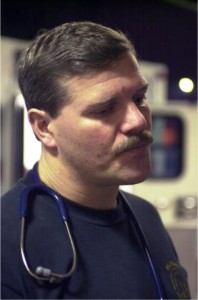Establishing the Setting.
- Provide a comfortable environment (lighting, temperature, furnishings).
- Establish a relaxed, unhurried setting.
- Sit down when speaking to the patient. Although you probably have dozens of things you need to be doing at that moment, try to relax. Don’t stand at the doorway or sit on the edge of your seat, as if you are preparing to jump and run as soon as you can get away.
- Face the speaker and maintain eye contact.
- Provide for privacy.
- Avoid interruptions and other distracting influences.
Verbal Communication Skills.
- Let the patient do the talking.
- Keep questions brief and simple.
- Use language that is understandable to the patient. Avoid acronyms and medical/nursing jargon if the patient is nonmedical.
- Ask one question at a time. Give the patient time to answer.
- Clarify patient responses to questions, not just for your own use, but also to let the patient know that you are listening (be sure you really are) and that you understand.
- Avoid leading questions. You want the patient to tell you what he is feeling, not what he thinks you want to hear. So avoid putting words in his mouth. For example, it might be better to ask, “How are you feeling?” rather than “I suppose you’re feeling rested after your nap.”
- Avoid how or why questions; they tend to be intimidating.
- Avoid the use of cliché statements like, “Don’t worry; it’ll be all right.” or “Your doctor knows best.”
- Avoid questions, which require only a simple “yes” or “no” response. You want to encourage the patient to talk to you.
- Avoid interrupting the patient. If you need to ask a question, wait until he has completed his thought.
Interviewing Techniques.
The following terms represent skills often used to foster better communication. Before using these techniques, remember that you must do what feels comfortable and natural to you. Even though you may have the best of intentions, if you do not sound sincere, what are the chances of someone really opening up to you? Also, keep in mind that your patients are individuals; if you sense that a particular patient may not respond well to a certain technique, you are probably right.
Reflection.
Repeating content or feelings. You might simply repeat what the patient has said, to give him time to mull it over or to encourage him to respond. Or, and often more effectively, you can reflect on what you think the patient is feeling. “It sounds like you’re concerned about your family.” or “I don’t think you’re very happy about this.” By reflecting on his feelings, you may be encouraging him to talk about something he may have been hesitant to bring up himself. Or you may be helping the patient to identify his own feelings about something.
Restating.
Rephrasing a question or summarizing a statement. “You’re asking why these tests are needed?” or “In other words, you think you’re being treated like a child.”

Facilitation.
Occasional brief responses, which encourage the speaker to continue. A nod of the head; an occasional verbal cue, such as “go on” or “I see;” and maintaining eye contact throughout the conversation all imply that you are listening and that you understand.
Open-ended questions.
Questions that encourage the patient to expound on a topic. If you want to encourage the patient to speak freely, you might ask “How are you feeling?” rather than “Are you in pain?”
Closed-ended questions.
Questions, which focus the patient on a specific topic. If you want a short, straight answer, ask a question which will allow only for a direct response, such as “When was your accident?” or “Do you have pain after eating?”
Silence.
A quiet period that allows a patient to gather his thoughts. Of course, this would be an occasional practice, used when you feel that the patient could use a little time to think about his response to a question or just to think.
Broad openings.
A few words to encourage the patient to further discuss a topic; for example, “and after that…” or “you were saying…”
Clarification.
Statements or questions that verify a patient’s concern or point. “I’m a bit confused about…Do you think you could go over that again please?”
